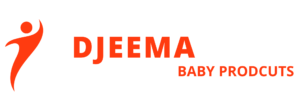
The Breastfeeding Paradox: The Rise of Expressed Milk and Its Implications
In a world saturated with baby products and constantly evolving parenting trends, the topic of how we nourish our infants remains a source of both celebration and controversy. While breastfeeding enjoys widespread recognition for its unequaled health benefits, a curious trend has taken root – the “normalization” of feeding expressed breastmilk, primarily via bottle. This seemingly subtle shift, from a practice reserved for specific needs to a mainstream choice, carries significant implications for families, societal norms, and women’s rights.
This article delves into the research and findings presented in “The Dilemma of Breastmilk Feeding,” a compelling study by renowned lactation expert Virginia Thorley. We will explore the scientific nuances, societal pressures, and often overlooked consequences associated with the rise of expressed milk feeding. Join us as we dissect this emerging dilemma and uncover the complexities of a practice increasingly portrayed as synonymous with breastfeeding – a notion, as we shall see, that requires careful consideration.
The Allure and Illusion of “Choice”: Redefining Infant Feeding Practices
Thorley argues that the normalization of expressed breastmilk feeding parallels the rise of artificial milk formula in previous generations. Once considered a necessity only in limited circumstances, formula feeding eventually permeated mainstream culture, often fueled by powerful marketing tactics. Today, expressed milk, despite its undeniable connection to breastfeeding, faces a similar trajectory.
Advertising campaigns often blur the lines between breastfeeding and feeding expressed milk, creating a perception of interchangeability where none truly exists. This ambiguity, whether intentional or not, can influence mothers’ choices, leading them to believe that pumping and bottle-feeding are simple extensions or even equivalents to breastfeeding. Such a narrative overlooks the intricate biological and emotional tapestry woven between a mother and nursing infant, a reality we will delve into shortly.
Furthermore, advertising frequently emphasizes the convenience factor of expressed milk. While undoubtedly appealing to mothers juggling work, family, and personal life, Thorley highlights how such messaging can inadvertently undermine a mother’s confidence in her body’s natural ability to provide. This focus on quantifiable output, measuring milliliters rather than responding to an infant’s cues, risks turning a natural process into a source of anxiety and self-doubt.
Breastfeeding: A Symphony of Sensations, More Than Just Milk
The act of breastfeeding transcends mere nourishment; it is a multifaceted experience that profoundly impacts both mother and child. Let’s break down the science:
- Skin-to-Skin Connection: When a mother nurses her baby, the close physical contact triggers a surge of oxytocin, often referred to as the “love hormone.” This surge isn’t just a feel-good experience; it plays a crucial role in maternal bonding, stress reduction, and milk production. This intricate dance of hormones is compromised when expressed milk enters the picture.
- The Importance of Suckling: Contrary to popular belief, a baby’s suckling at the breast involves a complex interplay of muscles and nerves not fully replicated with artificial nipples. This natural suckling pattern stimulates the mother’s breasts to regulate milk production precisely, a delicate balance often disrupted by the introduction of bottles.
- The Imprinting Instinct: Dr. Evelyn Mobbs, in her groundbreaking research, argues that mammalian infants possess an innate imprinting mechanism tied to oral-tactile stimulation. In essence, an infant seeks out and develops a deep-rooted familiarity with the sensation of their first “suck object” – ideally, the mother’s nipple. Introducing a bottle, while providing nourishment, can disrupt this primal bonding mechanism.
So, what happens when expressed milk becomes the primary mode of feeding? Thorley’s research suggests potential consequences, ranging from decreased skin-to-skin contact and compromised milk supply regulation to an increased risk of early weaning.
The Fatherhood Paradox: Expressing Milk, Limiting Bonds?
The “father’s right to feed” argument often accompanies the push for expressed milk normalization. However, Thorley presents a compelling counter-argument, suggesting that focusing solely on bottle-feeding might, in fact, limit a father’s bonding opportunities.
Think about it: Holding a bottle allows for minimal skin-to-skin contact, especially when compared to the intimate embrace of skin-on-skin cuddling or bath time. Thorley emphasizes that fathers can participate actively in a baby’s life without adopting a breastfeeding role. She advocates for practices like skin-to-skin care, babywearing, and active playtime, promoting deeper connections through shared experiences rather than a bottle.
Marketing Machines and the Illusion of Choice:
Breast pumps, initially designed for specific medical situations, have transitioned into mainstream “must-haves” for new mothers. This transition, Thorley contends, stems largely from clever marketing strategies. Pump manufacturers often position their products as essential breastfeeding tools, seamlessly integrating images of bottles and pumps, blurring the lines between the two practices further.
This marketing prowess raises a critical question: Are mothers truly being empowered with choice, or are they subtly steered toward practices that generate greater profit for baby product manufacturers? Thorley’s research reveals a potential conflict of interest. Advocacy groups dedicated to promoting breastfeeding often rely on funding and sponsorships from companies with vested interests in pump sales. This intertwined relationship warrants careful consideration as we navigate the often-blurred lines between genuine breastfeeding support and commercial gain.
Unveiling the Unseen: Pump Usage, Beyond Marketing Hype
While pumps undeniably serve an essential purpose for some mothers and infants, they are not without their downsides:
- Financial Burden: High-quality breast pumps are a significant financial investment for many families, further exacerbating existing socioeconomic disparities in breastfeeding rates.
- Mechanical Malfunctions and Potential for Harm: Thorley’s research reveals a worrying trend of underreported pump malfunctions, potentially leading to breast tissue damage and infection. This issue, coupled with the emotional burden often placed on mothers for “not producing enough,” underscores the need for transparent product information and realistic expectations around pump usage.
- Perpetuating Workplace Inadequacies: While access to breast pumps at work can be beneficial, Thorley suggests that this “solution” can mask the need for genuine systemic change. Providing adequate lactation breaks, dedicated nursing spaces, and even onsite childcare facilities would be more effective in supporting working mothers who wish to continue breastfeeding.
Speaking Truth to Power: The Language of Infant Feeding Matters
Just as advocates for breastfeeding tirelessly challenged the notion that artificial milk was equivalent to breastmilk, so too must we address the prevailing narrative surrounding expressed milk. We must empower mothers with the knowledge to make informed decisions without blurring the lines between breastfeeding and pumping.
Feeding a baby expressed breastmilk is undeniably beneficial compared to artificial formula. However, as Thorley’s research illustrates, it’s not an equal substitute for the multifaceted act of breastfeeding. The goal is not to shame mothers who rely on expressed milk but to arm them with knowledge, ensuring they understand the potential trade-offs and advocate for truly supportive policies and practices.
Beyond the Bottle: Towards Holistic Support and Informed Choice
Thorley’s research presents a thought-provoking exploration of the multifaceted dilemma surrounding expressed breastmilk feeding. It compels us to look beyond the marketing hype, acknowledge the complex societal forces at play, and advocate for truly supportive environments that empower mothers to make informed choices.
Rather than simply accepting the normalization of expressed milk as a natural progression, let’s focus on creating spaces where:
- Mothers feel confident in their bodies and their choices.
- Breastfeeding is recognized as more than just milk delivery.
- Accurate information is readily available, unclouded by commercial agendas.
- Fathers are encouraged to bond with their babies in ways that embrace the full spectrum of caregiving, beyond just bottle-feeding.
Ultimately, every mother and every baby deserves the opportunity to thrive. By understanding the nuances and navigating the complexities of infant feeding practices, we pave the way for a more supportive and informed future for families everywhere.
Lisoderm







